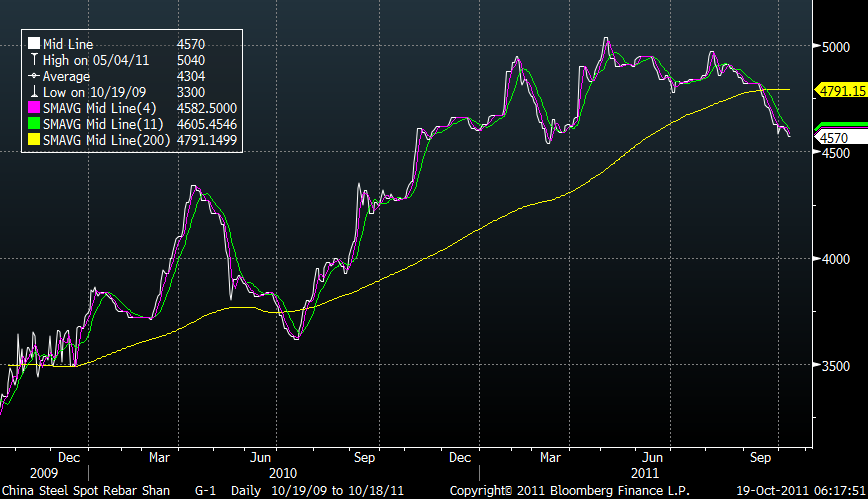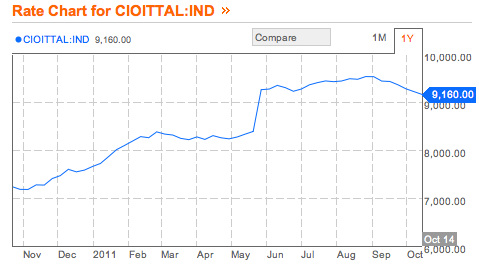You know the ore market is in trouble when contracts start to disintegrate. There’s a raft of reports indicating just that this morning. The pick is from the AFR (and is free) but owing to its archaic attitude to the internet, copy and paste is disabled, so I can’t provide any of it. Here’s an except from BS:
The combination of Chinese steel makers insisting on lower iron ore prices and Brazil accepting discounted prices to gain market share is putting significant pressure on Australian’s largest iron ore suppliers, according to a report by the Australian Financial Review.
Chinese steel mills are reportedly attempting to renegotiate quarterly prices to more closely track the spot price, which has fallen 15 per cent in the past five weeks.
Meanwhile, Brazilian miner Vale is adjusting its pricing model to meet reduced price demands by Chinese steel producers, which observers say will pressure Australian miners Rio Tinto Ltd, BHP Billiton Ltd and Fortescue Metals Group Ltd to do the same.
Ore got smacked another 2% yesterday and is now at $150. Meanwhile, the bottom has literally fallen out of the swaps market, down $10 or over 7% yesterday to $118:

There’s clearly a sudden and a rather dramatic oversupply of iron ore in the market. Interestingly, although steel prices are also falling, it is happening more slowly. Here’s Shanghai rebar:

The set up on the chart is also pretty ugly and I expect significant further falls. And perhaps it’s just that traders have managed to get a handle on iron ore swaps and are using that market to correct the steel/ore complex. But, there’s another chart I’ve been pointing to for months that suggests it’s more than that:

That’s China port ore stocks, which have been climbing to record levels all year. Now, they’re falling as mills turn to local supplies.
The iron ore market looks like its showing all the classic signs of a boom and bust. A tight market and slow supply response leading to a price bubble, hoarding and then crash.
I’m not saying it’s the end of the ore boom. But massive volatility is what you get in the conditions described above. Suggestions that ore will stabilise in the $140-150 range may prove foolhardy.

